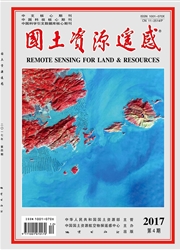

 中文摘要:
中文摘要:
以3S技术为支持,采用TM数据、应用单窗算法对1989-2010年间北京市五环内地表温度( land surface temperature,LST)进行反演,并采用同步的MODIS 温度产品对反演结果进行对比验证。在此基础上,利用距平值分析和剖面线分析等方法揭示了20多a来北京市地表温度的时空分异总体特征;基于归一化水汽指数( normalized difference moisture index,NDMI)和归一化建筑指数( normalized difference building index,NDBI)分析了研究区内地表温度的时空变化特征,定量揭示并阐述了地表温度和NDMI及NDBI的相关关系。研究结果表明:反演温度可较为真实地反映研究区地表热量的空间差异;北京地表温度时空变化特征明显,同一时段、不同土地覆盖类型的地表温度差异较为显著,热岛效应明显;地表温度和NDBI呈显著的正相关,与NDMI则呈显著的负相关,NDMI和NDBI在表征地表热特征方面均是较好的指标。该结果为监测北京地表温度变化及其时空分布特征提供了依据。
 英文摘要:
英文摘要:
Land surface temperature ( LST) is an important parameter in such fields as meteorology, hydrology and ecology, and the inversion of land surface temperature by use of remote sensing data is a simple and effective method. In this paper, with the support of the 3S technology, the authors took Beijing City as the study area to study the land surface temperature inversion and analyze spatial and temporal characteristics. Using TM data obtained from 1989 to 2010 within the 5th Ring Rroad of Beijing, the authors adapted the single-window algorithm in 20a to the inversion of land surface temperature, with a comparative study of the verification of synchronous MODIS temperature products. On such a basis, the anomaly analysis and hatches analysis were conducted to reveal the overall characteristics of temporal and spatial variation of Beijing surface temperature in more than 20 a. The characteristics of temporal and spatial variation of NDMI and NDBI index were analyzed based on 20 years' land surface temperature of the study area, and the relationship between land surface temperature and NDMI as well as between land surface temperature and NDBI was quantitatively revealed and expounded. Research results show that the single-window algorithm method can obtain the reasonable land surface temperature and can reflect the spatial difference of surface heat condition. Beijing land surface temperature variation characteristics are obvious, surface temperature difference of different land cover types in the same period is evident, and heat island effect is also significant. A significant positive correlation between surface temperature and NDBI exists, and there is a significant negative correlation with NDMI, which means that both NDMI and NDBI are good indicators for marking surface thermal characteristics, and they can be used to provide an effective basis for monitoring surface temperature changes and its spatial and temporal characteristics.
 同期刊论文项目
同期刊论文项目
 同项目期刊论文
同项目期刊论文
 期刊信息
期刊信息
